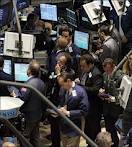Introduction
"China Hot Stocks" is a popular topic among stock investors in the recent years. There are many areas of differences, as compared to American and European stock markets, need to be understood by prospective investors if they want to participate in China's strong bull run from 2005 after the bear was beaten off.
Color Codes of Price Movement
Color codes for price movements are the direct opposite of the western stock markets. When price movement is positive as compared to the previous day's closing price, the instant price will be labeled in red color. Reversely, if the price moves down as compared to the previous day's closing, the instant price at the specific moment will be in green color.
Shanghai Stock Exchange.
There are 2 boards -A and B shares. Shanghai A stocks are traded in Reminbi while Shanghai B are traded in U.S. Dollars. Due to China currency control policy, local Chinese are limited in holding and trading the U.S. Dollar priced Shanghai B shares. So the locals mainly traded in the A market while foreigners could only trade in the B market. As of January 2008, there are 840 A-share companies listed and 54 B-share counters. You can see that B market is relatively small in size as compared to A market.There are companies which are listed both in the A and B markets.
Shenzhen Stock Exchange.
There are 2 boards -A and B shares. Shenzhen A shares are transacted in Reminbi and Shenzhen B are transacted in Hong Kong Dollars. The locals mainly trade in the A market due to foreign currency control while as foreign entities are restricted to the Hong Kong Dollar priced B shares. As of January 2008, there are 670 stocks listed on Shenzhen A market and only 55 on the B market. B market size is less than 10% of A market.
Hong Kong Stock Exchange - H shares (China companies or China related companies listed in Hong Kong) and Hong Kong companies' stocks are all traded in Hong Kong Dollars. Hong Kong's international exposure to western funding, more established financial and legal systems attracted many China companies' IPO on Hong Kong Stock Exchange, including many China government linked corporations such as PetroChina, Bank of China, and China Mobile, China Shenhua. One key private stock listed on HKSE, in late 2007, is Alibaba.com, an online trading platform for wholesalers by a western-educated Jack Ma.
Taiwan Stock Exchange's index has been gloomy for almost 10 years. The main negative factor is a political issue on China's conflict with Taiwan government and its resultance of one-way drainage of investment flow from Taiwan into China. With the upcoming Taiwan Presidential election in March 2008, a new Nationalist Government could decode the current economic mess on the island and revive the Taiwan stock market confidence. I would not advise any move into the Taiwan stocks until the election result on March 22nd.
What Foreigners Could Buy?
Only Shanghai and Shenzhen B shares, Hong Kong and Taiwan markets are open to foreigners. The Authority is slowly opening up channels through which foreigners could invest indirectly in the A stocks listed in Shanghai and Shenzhen exchanges.
Price Differentials
Prices Differentials between A and B shares of the same stock are significant. Real estate developer giant Wangke's A shares, on January 28th 2008, were traded at about 60% higher than its B shares on the Shenzhen Stock Exchange. This means the relative significant investment value on B stock if investors are bullish on this company.
Some Chinese companies are both listed on the China A market and Hong Kong Stock Exchange. Prices Differentials between A and H shares of the same stock e.g, Jiangxi Copper's H shares with a dynamic PE of below 10 (Stock code 358) are only 30% of A shares (Stock code 600362) on the closing day of January 25, 2008. This illustrates the investment value of the H shares and the unbelievable huge gaps between A and H shares.
Buying and Selling
Buying of shares in the A and B markets in Shanghai and Shenzhen markets can only be sold on the next trading day. And there is no "Shorting" allowance for the play. This is very different as compared to Hong Kong market and many western exchanges, where selling of shares could happen the next minute after you buy or shorting the stock.
Price Movement Limits
Price Movements of Chinese stocks on A and B markets are limited to either 5% or 10% per trading day. Stock closed at $10 the previous day is only allowed to move between the lowest $9 to highest $11 limits. These limits do not apply to the 1st trading day upon its IPO. And the above Stock Exchange rule also does not apply in the Hong Kong market.
China Stock Market Trend
The locals are hopeful of a 10-year bull run from 2005. The underlying forces behind the sustaining strength would be the aggressive GDP growth of 10% average of the last 10 years, the global pressures for Chinese currency Reminbi appreciation, the new tax policy which came into effect from January 1st 2008, the successful restructuring of many large-size state-own enterprises, government's push for higher-end manufacturing to improve export values further and the major international sports and business events to be hosted by China in the nest few years such as Beijing Olympics 2008 and Shanghai World Expo 2010.
Kiing is a freelance writer and stock investor in U.S and Asian stock markets [http://www.101stockinvestments.com] He writes for 101StockInvestments.com [http://www.101stockinvestments.com] - a FREE resource center for novice or seasoned market investors. This article could be distributed digitally as long as the website links remain intact.






